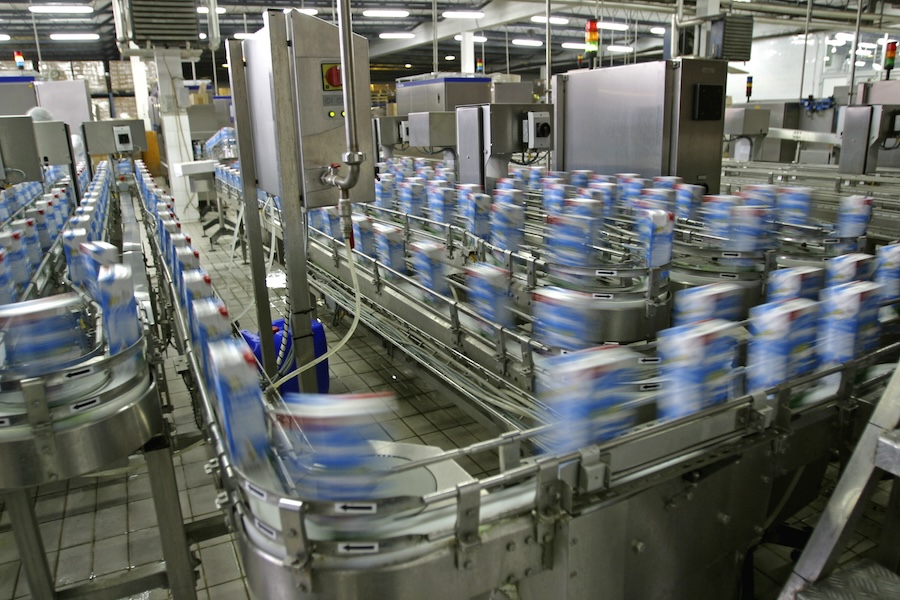A new report indicates NZ dairy producers are set make the most of the sharp drop in Australian export volumes that has coincided with dairy imports spiking.
Australia’s dairy import and export mix is “slowly trading places” – with export volumes falling sharply in recent years while imports have spiked, Rabobank says in a newly-released report.
In its Australian Dairy Sector Outlook: Slowing trading places, the specialist agribusiness bank says the overall trade profile for Australian dairy is in a period of transition, “driven by a confluence of factors, including lower domestic milk production, an erosion of export competitiveness and more favourable domestic market returns impacting the product mix”.
Report author, RaboResearch senior dairy analyst Michael Harvey says the bank expects dairy imports to “play a more significant role” in Australia’s domestic supply chain into the future with local milk production remaining constrained and as the industry further adjusts to accommodate these shortages.
“And this will create growth opportunities for dairy exporters around the globe – including those in New Zealand,” he said.
‘Chronic shortage’
The report says Australia produced 8.129 billion litres of milk in 2022/23, marking the “third consecutive year of decline” in milk production.
“Since the most recent production high in 2020/21, more than 700 million litres of milk have been lost from the supply chain,” Mr Harvey said, “resulting in a chronic shortage of milk for manufacturing – that is the total milk available outside what is used for domestic and export drinking milk.”
In fact, in 2022/23, the country’s milk supply available for manufacturing fell to its lowest level since the 1990s, he said.
Slow retreat
Australia has had a long history as an exporter of dairy products and has served as a “key procurement region for international buyers, due to its reputation for product quality, accessibility and innovation”, the report says. However, Australia has been on a slow retreat from the global dairy export arena for some time, the bank says.
“Dairy exports fell off a cliff in 2023,” Harvey said. “For the calendar year 2023, dairy export volumes were down with double digits across most products, with the largest declines in liquid milk (down 41 per cent year on year) and butter (down 52 per cent).”
Despite the reduction in domestic milk production and export volumes, however, Australia remains a net exporter of dairy products in liquid milk equivalents and still ranks as the fifth-largest dairy exporter in the world, with four per cent of global trade.

Michael Harvey.
Import spike
Dairy imports have played a crucial role in the Australian supply chain for a long time, the report says. But, over the decade between 2013 and 2023, the annual dairy import volume in liquid milk equivalent has doubled, Rabobank says.
The pace of growth in dairy imports has shifted gears in recent years, Harvey said, with a broad-based lift in import volumes in 2022 and 2023.
“In 2023, Australia imported more than 1.4 billion litres of dairy product in liquid milk equivalents, excluding caseins,” Harvey said.
“A large proportion of the import mix is bulk and ingredients – particularly butter and skim milk powder – as domestic manufacturing of these products has declined. But more imported dairy products are also appearing on retail market shelves.”
The bank expects dairy imports to grow even further over the medium term – driven not just by shrinking Australian milk production, but also the comparative cost advantage of imported product (due to lower overseas dairy prices) and also a spike in demand for lower-budget dairy products among Australian consumers due to cost-of-living pressures.
Opportunities for New Zealand
According to DairyNZ, dairy generates $25.7 billion in exports, which is one in every four export dollars that New Zealand earns. Exporting success has supported the dairy sector to continue growing its economic contribution, delivering $11.3 billion in value add to the economy in the year ending March 2023.
Harvey said Australia was an important market for New Zealand dairy and that Kiwi exporters were well-positioned to capitalise on the expected lift in Australian imports.
“Behind China, Australia is one of New Zealand’s largest export destinations for dairy products accounting for approximately five per cent of total New Zealand dairy exports by value,” he said.
“New Zealand already holds a dominant share of Australian dairy imports and is the largest supplier of butter and cheese into the Australian market.
“It looks fairly clear that an ongoing shortage of milksolids will require Australian dairy companies to expand their dairy product and ingredient procurement capabilities over the medium-term creating growth opportunities in certain products and ingredients for global dairy exporters.
“And given New Zealand’s close proximity and strong existing trading relationship, Kiwi dairy exporters look well-placed to take advantage.”




